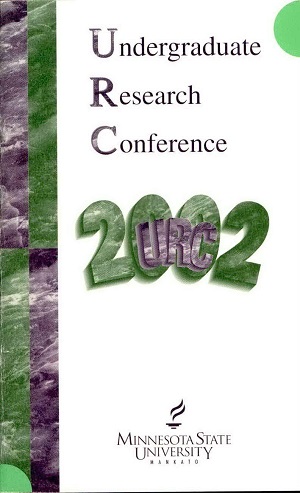Abundance and Diversity of Macroinvertebrates in Swan Lake and Middle Lake
Location
CSU
Student's Major
Biological Sciences
Student's College
Science, Engineering and Technology
Mentor's Name
JohnD. Krenz
Mentor's Department
Biological Sciences
Mentor's College
Science, Engineering and Technology
Description
Aquatic macroinvertebrates serve as an important source of protein for migrating and nesting waterfowl, particularly during spring and summer. Swan Lake is the largest single prairie marsh (waterfowl breeding site) in North America. The goal was to detect a correlation between macroinvertebrate abundance and vegetation habitat type and time of year. Macroinvertebrates were sampled from Swan Lake and nearby Middle Lake during four separate 7- day sampling periods from June-August 2001. Sampling consisted of placing funnel traps (108 total) in four vegetation types. In addition, sweep-net samples were taken at each trap location. Macroinvertebrates collected were preserved, sorted, and identified in the laboratory. Representatives of 17 orders were found in the samples. Comparisons of the 2001 data to data from previous years taken in the same manner may help interpret variation in waterfowl abundance.
Abundance and Diversity of Macroinvertebrates in Swan Lake and Middle Lake
CSU
Aquatic macroinvertebrates serve as an important source of protein for migrating and nesting waterfowl, particularly during spring and summer. Swan Lake is the largest single prairie marsh (waterfowl breeding site) in North America. The goal was to detect a correlation between macroinvertebrate abundance and vegetation habitat type and time of year. Macroinvertebrates were sampled from Swan Lake and nearby Middle Lake during four separate 7- day sampling periods from June-August 2001. Sampling consisted of placing funnel traps (108 total) in four vegetation types. In addition, sweep-net samples were taken at each trap location. Macroinvertebrates collected were preserved, sorted, and identified in the laboratory. Representatives of 17 orders were found in the samples. Comparisons of the 2001 data to data from previous years taken in the same manner may help interpret variation in waterfowl abundance.



